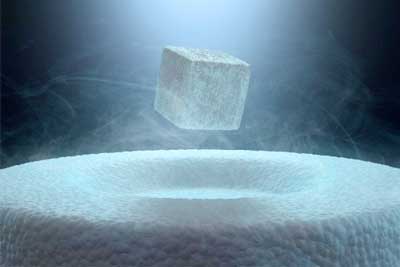Superconductivity: The Phenomenon of Zero Electrical Resistance
What is Superconductivity?
Superconductivity is a fascinating phenomenon in which certain materials exhibit zero electrical resistance and expel magnetic fields below a characteristic temperature, known as the critical temperature (Tc). In the superconducting state, electrons form Cooper pairs and flow through the material without encountering any resistance, leading to the lossless conduction of electricity.

History of Superconductivity
Superconductivity was first discovered by Dutch physicist Heike Kamerlingh Onnes in 1911 while studying the electrical properties of mercury at extremely low temperatures. Since then, numerous other superconducting materials have been discovered, including various metals, alloys, and ceramics. The quest for room-temperature superconductors has been a major focus of research in the field.
Types of Superconductors
Superconductors can be classified into two main categories based on their behavior in magnetic fields:
Type I Superconductors
Type I superconductors are primarily pure metals, such as mercury, lead, and tin. They exhibit perfect diamagnetism below their critical temperature (Tc) and critical magnetic field (Hc), completely expelling magnetic fields from their interior (Meissner effect). Above Hc, they abruptly transition to the normal state. Type I superconductors typically have low Tc values (below 10 K) and low Hc values (below 0.1 T), limiting their practical applications.
Type II Superconductors
Type II superconductors are more complex materials, typically alloys or compounds, such as niobium-tin (Nb3Sn) and yttrium barium copper oxide (YBCO). They have two critical magnetic fields: a lower critical field (Hc1) and an upper critical field (Hc2). Below Hc1, they behave like Type I superconductors, completely expelling magnetic fields. Between Hc1 and Hc2, they enter a mixed state where magnetic fields partially penetrate the material in the form of quantized flux vortices. This allows Type II superconductors to maintain superconductivity even in the presence of strong magnetic fields. They also have higher Tc values compared to Type I superconductors, with some materials exhibiting superconductivity above 77 K (the boiling point of liquid nitrogen).
Mechanisms of Superconductivity
The underlying mechanisms of superconductivity vary depending on the type of superconductor:
Conventional Superconductors
In conventional superconductors, such as most Type I superconductors, the superconductivity is explained by the Bardeen-Cooper-Schrieffer (BCS) theory. According to BCS theory, electrons in a superconductor form Cooper pairs through an attractive interaction mediated by lattice vibrations (phonons). These Cooper pairs condense into a quantum state with zero resistance and perfect diamagnetism.
Unconventional Superconductors
Unconventional superconductors, including high-temperature superconductors (HTS) and heavy fermion superconductors, exhibit superconductivity that cannot be fully explained by the BCS theory. HTS materials, such as cuprates and iron-based superconductors, have Tc values above 30 K, with some even exceeding 100 K. In these materials, the pairing mechanism is believed to involve other types of interactions, such as magnetic or electronic correlations. The exact nature of the pairing mechanism in unconventional superconductors remains an active area of research.
Applications of Superconductivity
Superconductivity has a wide range of potential applications across various fields:
Energy
Superconductors can be used in the development of efficient and compact electrical power systems, including generators, motors, and transmission lines. For example, the AmpaCity project in Germany has successfully demonstrated the use of superconducting cables for efficient power transmission in urban areas. Superconductors are also used in high-performance magnets for energy storage and fusion reactors, such as the ITER project, which aims to demonstrate the feasibility of fusion power.
Electronics
Superconducting electronics, such as Josephson junctions and superconducting quantum interference devices (SQUIDs), offer the potential for high-speed, low-power computing and ultrasensitive magnetic field detection. IBM has developed a superconducting quantum processor called the IBM Q System One, which utilizes superconducting qubits for quantum computing. Superconductors are also used in the development of quantum sensors, such as the SQUID-based magnetometers used in geophysical exploration and medical imaging.
Transportation
Superconducting magnets can be used in maglev trains, enabling high-speed, frictionless transportation. The Central Japan Railway Company has developed the SC Maglev train, which uses superconducting magnets to levitate and propel the train, achieving speeds of up to 603 km/h (375 mph) in test runs. Superconducting cables can also be used for efficient power transmission in electric vehicles and aircraft, reducing weight and increasing efficiency.
Medicine
Superconducting magnets are essential components of magnetic resonance imaging (MRI) systems, allowing for high-resolution imaging of the human body. The most advanced MRI systems use superconducting magnets with field strengths of up to 7 Tesla, providing unprecedented image quality and diagnostic capabilities. Superconducting quantum interference devices (SQUIDs) are also used in magnetoencephalography (MEG) for brain imaging and in magnetocardiography (MCG) for heart monitoring, enabling non-invasive detection of weak magnetic fields generated by the brain and heart.
Challenges and Future Perspectives
Despite the remarkable properties and potential applications of superconductors, several challenges need to be addressed for their widespread adoption. One of the main challenges is the requirement of cryogenic cooling to achieve and maintain the superconducting state. The development of room-temperature superconductors remains a major goal in the field, as it would revolutionize many aspects of technology and energy systems.
Future research in superconductivity will focus on the discovery and optimization of new superconducting materials with higher critical temperatures and improved properties. The exploration of unconventional superconductors and the elucidation of their pairing mechanisms will also be crucial for advancing the field. Additionally, the integration of superconductors with other emerging technologies, such as nanotechnology and quantum computing, will open up new opportunities for innovative applications.
Further Reading
Journal of Superconductivity and Novel Magnetism, A Comprehensive Review of Superconductivity Research Productivity
Superconductor Science and Technology, A review of superconductivity in nanostructures—from nanogranular films to anti-dot arrays
